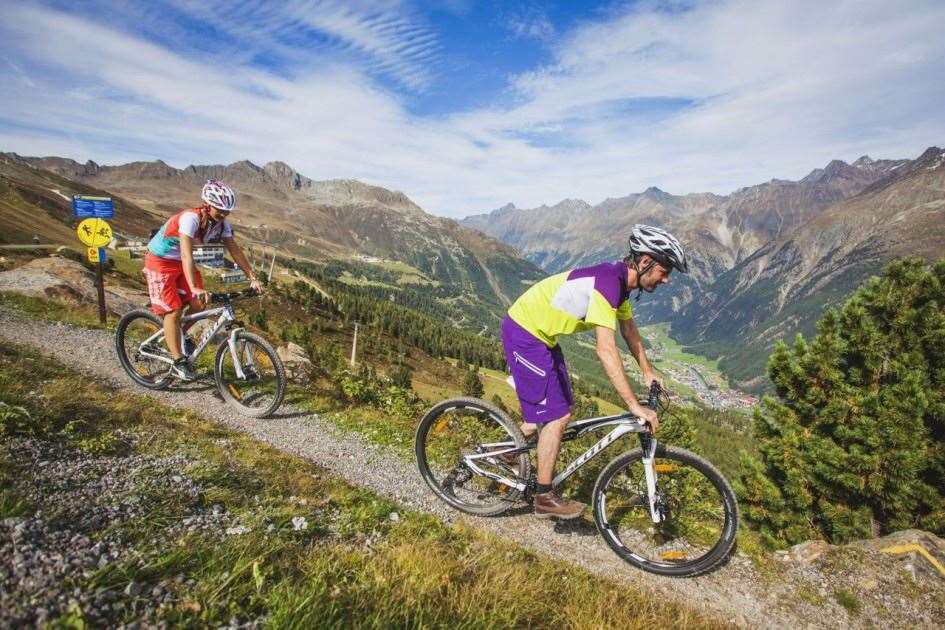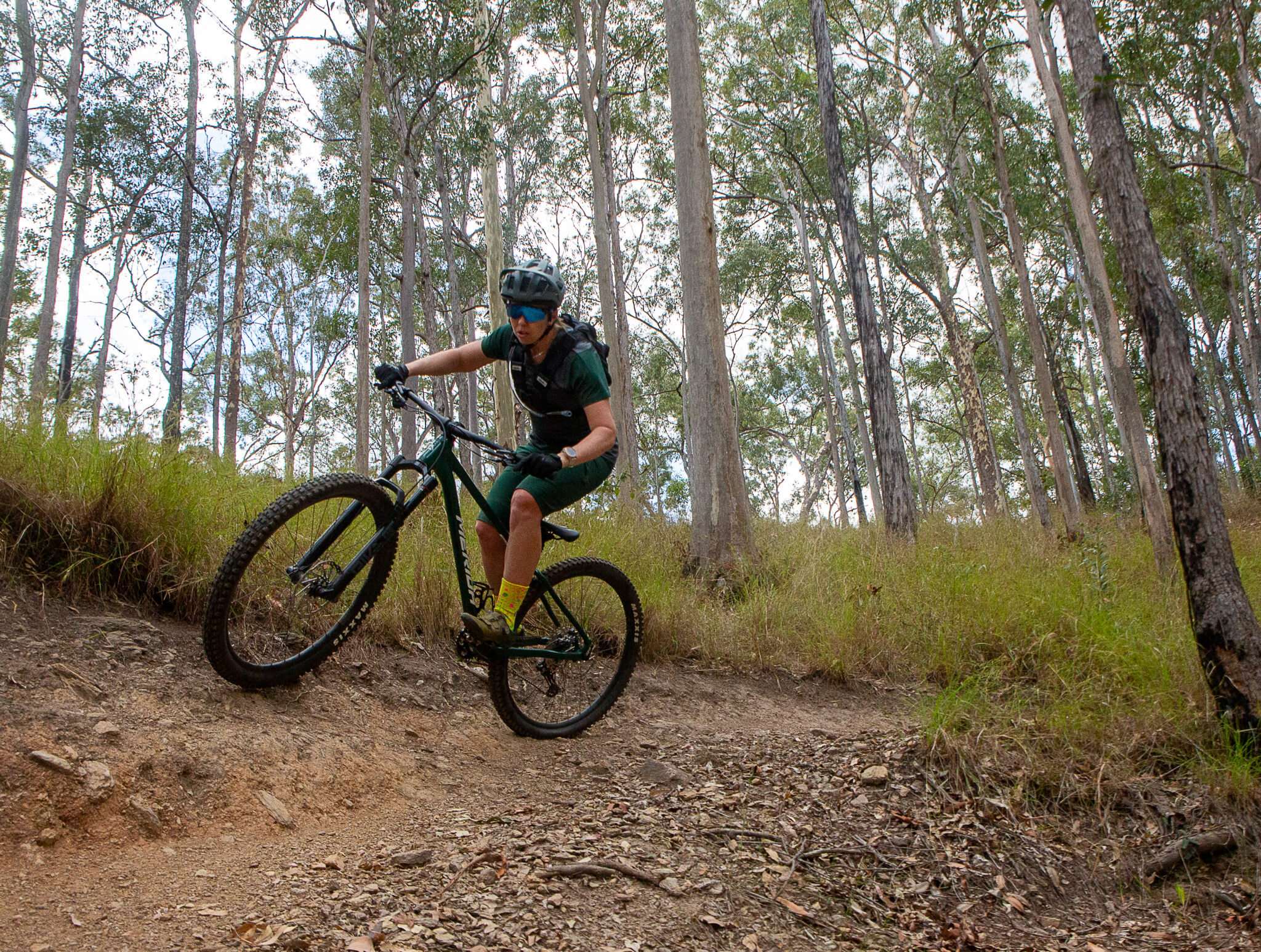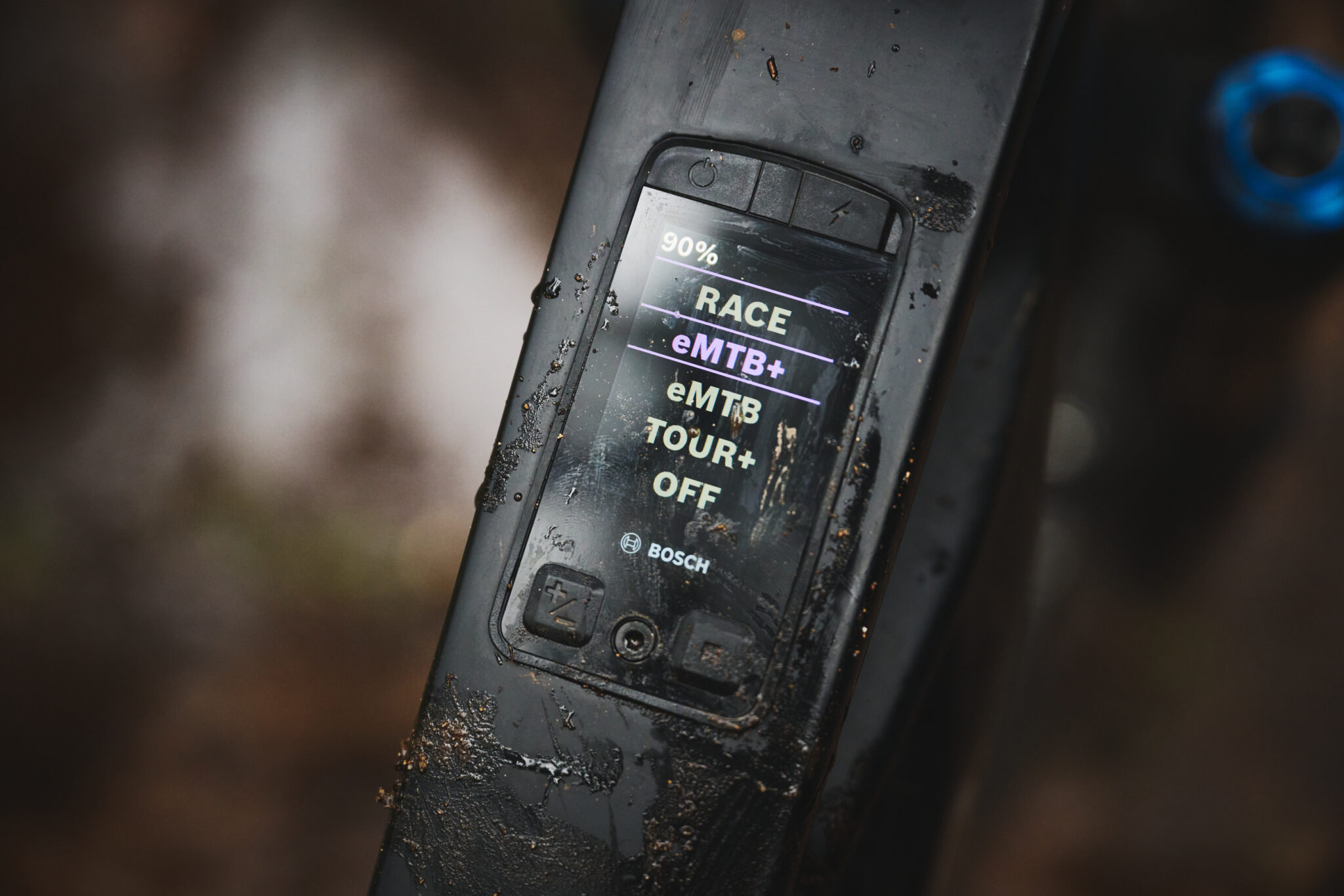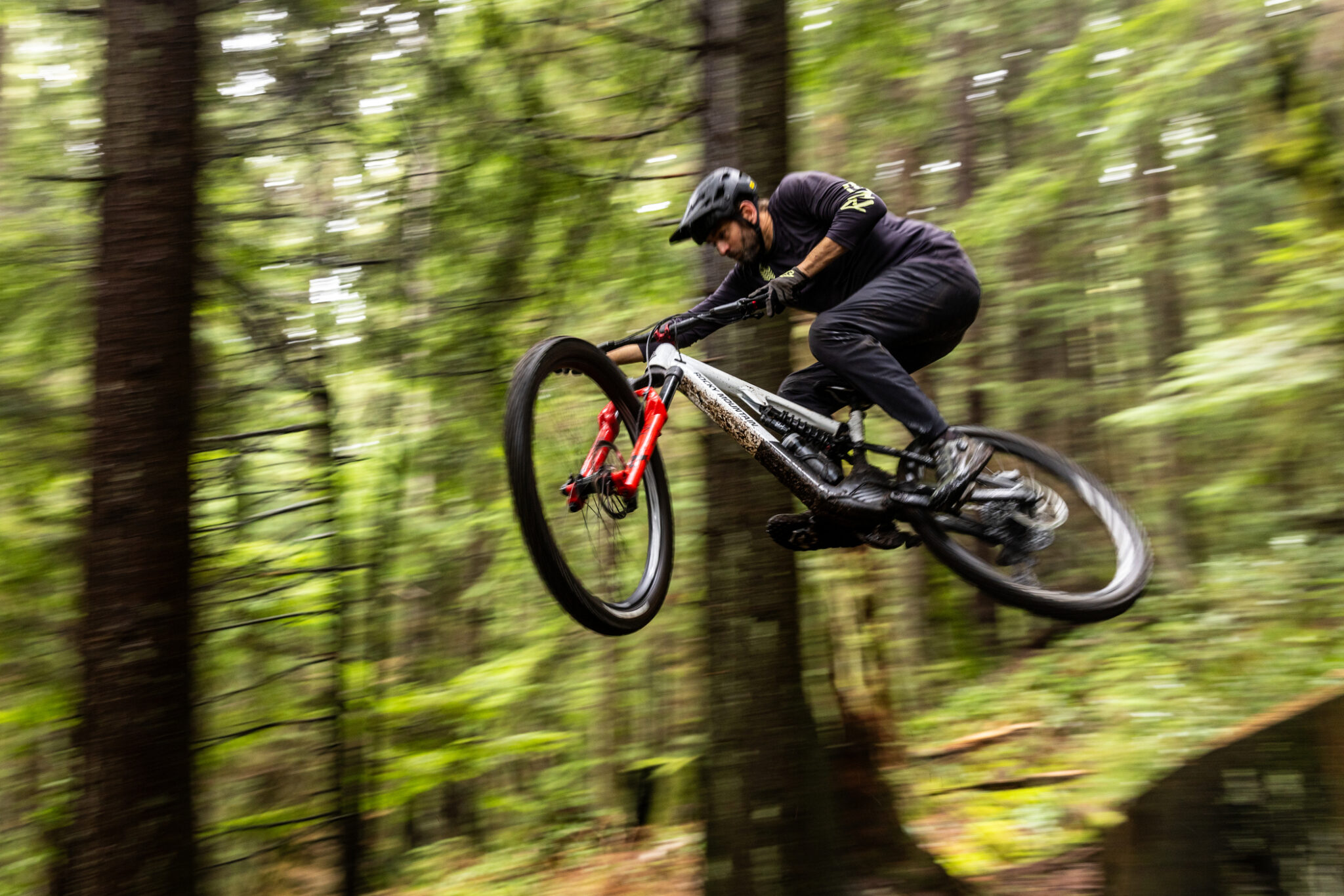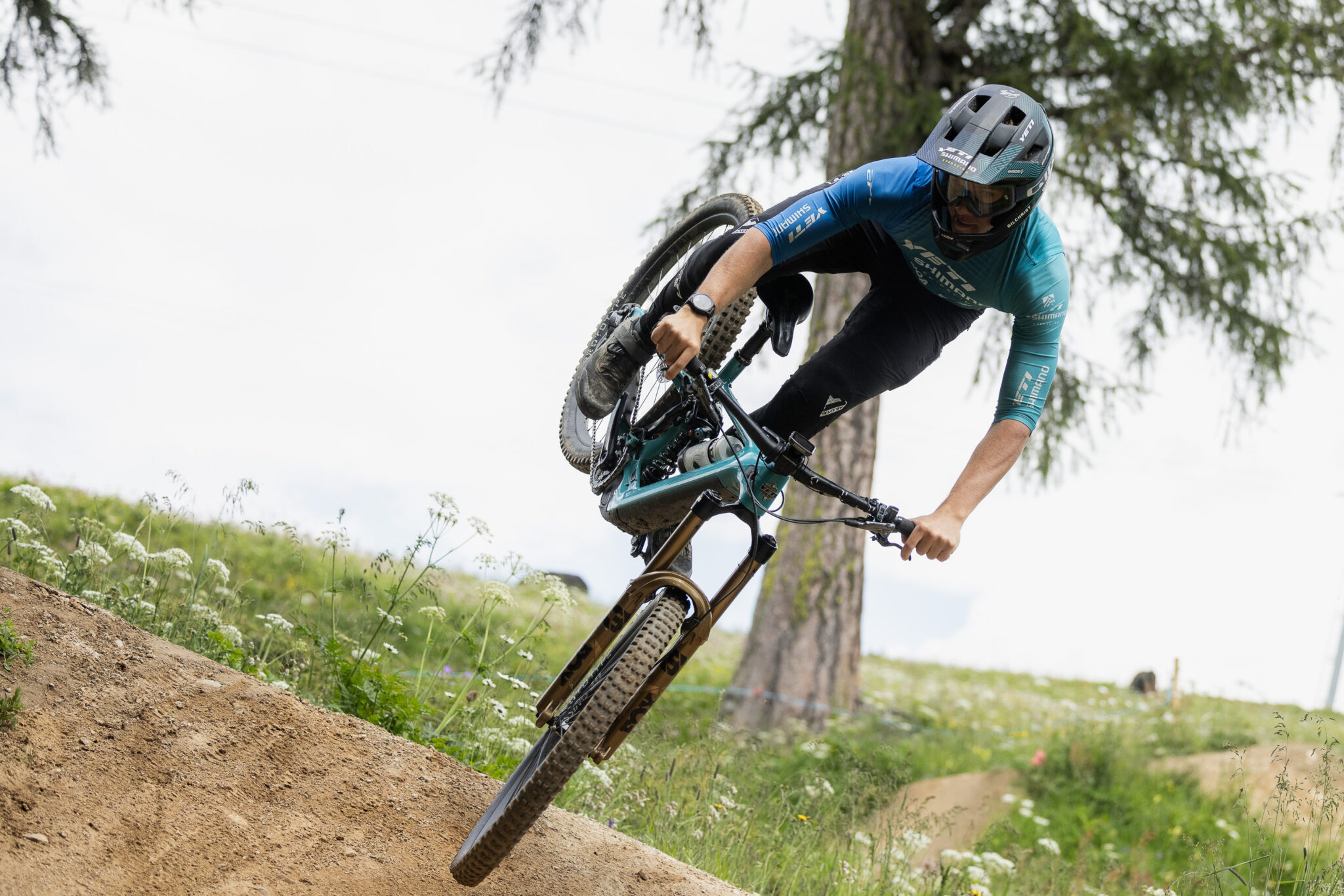The steep trails of the Oetztal
The Austrian Alps are known for skiing. But the mountain biking is similarly steep and gravity fed - and the service and food and drink are the best!
Images: Mike Blewitt, Imogen Smith, Ötztal Tourism
As you head west across Austria, the nation narrows like a funnel, squeezed by mountain ranges that make up its borders with Germany to the north, Italy to the south, and Switzerland to the west. The E60 heads up this long valley all the way to Lichtenstein’s border, but take a sudden left hander and curve between a few cliffs and a new valley opens up – green, narrow, walled in by immense granite mountains, traced by a foaming river, 65 kilometres long and terminating at the Timmelsjoch (which at 2509m is Europe’s highest road mountain pass) and the Italian border. The Ötztal.
The region itself is Tyrolean. Not Austria’s alone; it’s a ‘Euroregion’ – a cultural district. Descended from the Tyrolean state that was divided when Italy and Austria’s national boundaries were redrawn after the First World War, the area still maintains social and linguistic unity. So foggy are the mountainous borders between Italy and Austria here that when the priceless 3,300 year-old mummy of the ‘Iceman’, nicknamed Ötzi for the region, was dug out of the snow in 1991, a geographical boundary survey had to be performed to determine exactly which country could claim the archaeological treasure. It turned out to be Italy, by fewer than 100 metres.
While charming timber shepherd’s huts still dot the mountainsides, and the high summer meadows still echo with the sound of gently knocking cowbells, today tourism is the Ötztal’s main industry. A huge ski destination in winter, now the valley’s line of small towns are alive with the colour of a European summer: icecream, Dutch tourists, and lots, and lots of bikes.
WHAT’S ON
The Ötztal has achieved what Australian ski resorts still dream of – a real summer tourism season as big as the winter equivalent, where the ski lifts stay open to accommodate hikers, bikers, and sightseers, and the bars, restaurants, and hotels are packed for months with visitors from around the world.
While mountain biking is one of the most popular summer sports, there’s also 680 climbing routes, 1600km of hiking trails, a massive via ferrata network, rafting, canyoning – that’s just the free stuff.
There’s just one railway station in the Ötztal, right at the low end of the valley, and it’s easy enough to transfer there to bus or taxi to make your way up the valley. Laden with bikes, we arrive by car, driving down fast (but orderly) Austrian autobahns past Salzburg and Innsbruck before turning south up the valley. We’ve got bikes, hydration packs, a litre of suncream, a pile of wet-weather gear we’re hoping not to use, and two bags of food: just the essentials – nutella, honey, fruit, nuts, bread, and coffee – just in case our hotel turns out to be a little too far from the Italian border.
NO NEED TO SLUM IT
We’re instantly reassured when we arrive at Hotel Bäckelar Wirt in Sölden, halfway up the valley. There are white bathrobes, a bike room, and an immense view to the green slopes and granite we’ll be riding in the coming few days. After a good night’s rest, breakfast is an immense buffet – one of the best we’ve visited in Europe (there’s even a toaster) freshly ground coffee, bircher muesli and four kinds of local yoghurt. We’re at Hotel Bäckelar Wirt on suggestion that it’s one of the best places for bikers to stay in Sölden. Apart from being right above the bike school (and the breakfast buffet), it’s a BMC Bike Premium Hotel. That means quality downhill, XC, and e-bikes are available free of charge to guests.
We’re also equipped with the Ötztal Premium Card, which comes free when you book with a participating hotel in the valley (there are 170, and the card can also be bought separately). Basically, it entitles you, from the day you check in to the day you check out, with gondola and lift use (six of which accommodate mountain bikes), public transport, entry to lakes and pools, museums, the Aquadome thermal spa, and Area 47, the ‘ultimate outdoor playground’ (very popular with kids).
LEAD THE WAY
We’re met on our first day by local bike school instructor and guide Kamil Pospisil, from the Czech Republic. Fluent in four languages, Kamil works as a massage therapist during the ski season and, although he earns enough to have the summer off, works through summer because he likes meeting people from around the world.
‘It’s like going on holiday without needing to travel anywhere’ he says.
Tours cost €110 for a half-day, for one or two people, and courses at the bike school’s custom track and on the trail are €55 per day. Kamil tells us that many riders book up to five days, starting out developing their skills with him at the bike school before hitting more and more advanced trails.
We start with a few stretches to limber up – he’s tactful enough not to say it outright, but we know it’s so we bend a little more before breaking if we happen to crash – then he points out our route on the map before we set off at a cracking pace up the valley, turning off the bitumen road onto gravel forest paths. The trail network is designed so that singletrack goes down the steepest routes, while the climbs are on wider, gentler hills, although many riders still choose the gondola and let gravity do the rest. Kamil prefers to climb, too: ‘You have to earn the descents,’ he says. ‘That’s why I never take the ski lift when I’m riding on my own.’ While it’s true that a quick ride up the gondola leaves more time for the best riding, climbing up peaceful forest tracks gives us plenty of time to take in the views of the valley below, the scent of the pines, to photograph sweet alpine flowers, and listen to cowbells and trickling streams.
Flowers carpet the meadows in white, purple, pink and yellow. Enormous granite rocks on the sides of the trail are alive with damp green moss, mushrooms, and tiny succulents. Beyond the trail, pine forest coats the mountains until it gives way to rocky grasslands and, eventually, snow and ice.
We climb from Sölden’s 1400m to above 2000m over about two hours (a trip that would take a few minutes in the gondola) but the effort’s all but forgotten when we reach our first singletrack: the epic Panorama Trail, running along a neat ridgeline. Once we reach Hochsölden it’s time for a snack. At the mountain hut we order traditional ‘Kaiserschmarren’: shredded pancakes, served with fresh berries and plum sauce, and apple strudel – regional delicacies with just enough calories to get us pedalling again, especially when chased by litres of beer. Tradition is alive and real in the mountains. We’re served by women in the disconcertingly sexy Austrian traditional dress the Drindl, accompanied by an oompah band, and in the background a chef commandeers an enormous copper pot full of dumplings. When we finally polish off the beer, we head down the mountain on Kamil’s favourite trails.
Singletrack is shared with walkers, so Kamil warns us to be careful, slow down, and say hi. This is easy. There’s no language barrier on the mountains, as the standard greeting is a cheerful ‘Hullo!’ and hikers – families of all ages, and sometimes many generations, lean on their walking sticks to watch us slip and dodge our way down the narrow trails, some of them taking photos. All of the signposted trails around Sölden are rated for difficulty, from S0 – or very easy – to S3 – advanced. We take our XC hardtails down S2 and S3 trails, and manage well, although the fact that these trails are converted hiking trails, rather than trails built for bikes – becomes obvious in a few corners so tight that neither our 29” wheels, nor our guide’s 26” wheels – can clear them.
After all the pedalling, the trip downhill is over in a rush of adrenalin and ear-popping loss of altitude. It’s already mid-afternoon, so, after a quick spin around the bike school’s practice track and Sölden’s custom-built pump track, we head back to our hotel for a rest.
The next day is our first without a guide, and we make the mistake of pointing our bikes straight up a ski run and suffering for our enthusiasm, ending up on grassy slopes with an average gradient of about 25%. This is over pretty quickly, however, and we’re soon above the tree line making our way towards today’s XC-style goal: the Rettenbach glacier, a frozen river that’s popular with walkers (and of course skiers in winter), but so rarely visited by mountain bikers that we’re applauded by hikers on our way up. The difficulty of the climb – exacerbated by altitude approaching 3000m – is partly responsible for a new trend in alpine exploration pioneered in Austria: e-biking and e-hiking.
While not yet popular in Australia, e-bikes are standard fare in Europe, having spread from cities where commuting by bike has always been safe and simple, to the rough and steep Alps, where it could be that battery-assisted pedal power has truly realised its potential. All of Sölden’s bike shops and bike hotels offer e-bikes for hire, many equipped with high-end components and suspension technology.
Contrary to what a lot of people think, e-bikes don’t negate the need to pedal at all – and many only work when you are pedalling. Equipped with a battery pack about the size of a large bidon, what e-bikes really do is give assistance – up to about 250 watts – when you are struggling into a headwind or climbing a steep hill, which you’ll do a lot of if you’re riding in the Alps. Basically, when your speed drops the motor kicks in and will help you maintain about 25km/hr. Austria is one of the world’s fiercest supporters of e-bike tourism, and these little electric motors are expanding mountain biking in profitable markets, like retirees and families with young children. In the Ötztal, there are numerous charging stations both in town and on the slopes.
One popular permutation of the sport taps into the already strong hiking market. E-hiking means that fit nature lovers can ditch the gondola or bus that usually delivered walkers part-way to their trails. Like us, hikers are choosing to experience the climb up to their walks with the eco-friendly peace and quiet of a bike – just without the burning quads. E-bikes can then be parked and recharged at many of the mountains’ inns, and left for the day while hikers ascend the high summits.
But we’re mountain bikers and spent the day wearing ourselves out – just enough that the gondola and some gravity riding seemed the perfect way to finish our three-day trip.
Sticking to our base in Sölden, we pack as much singletrack into one day as humanly possible. The hills around the town include 16 gravity runs, most of them for an intermediate level rider. These descents are fast flowing, techy, sometimes muddy. They’re punctuated by exposed roots and rocks, and dip to -35% gradient, demanding such complete concentration that the only photos we take this day are from the gondola.
Three days is nowhere near enough time to explore the valley’s 900km trail network, which includes 40 signposted routes, but it’s given us a taste. The climbs are tough and challenging, the descents pure enduro: full of exciting natural features, twists and turns, tight chutes and plenty of adrenalin.
Accommodation was supplied by Ötztal Tourism. Photos were taken using a Nikon AW110 and AW1
MORE INFO
App: iOtztal
Bike tours and lessons: www.hike-bike.at/en
Ötztal premium card: www.premiumcard.oetztal.com
Bike to take: A dual suspension trail bike would be perfect, but most singletrack would be rideable (though less enjoyable) on a hardtail. The less climbing you intend to do, the heavier-duty bike you can ride in the Ötztal. Hire an e-bike if you’re feeling adventurous.
Check out: Hotel Bäckelar Wirt offers 3 nights’ accommodation, lift pass, 1-day BMC bike hire, breakfasts and three-course dinners for €200 per person. (Valid at time of publication.)
Fly to: The closest airport is Innsbruck, but you are more likely to fly to Zurich or Munich from an Australian capital city.

